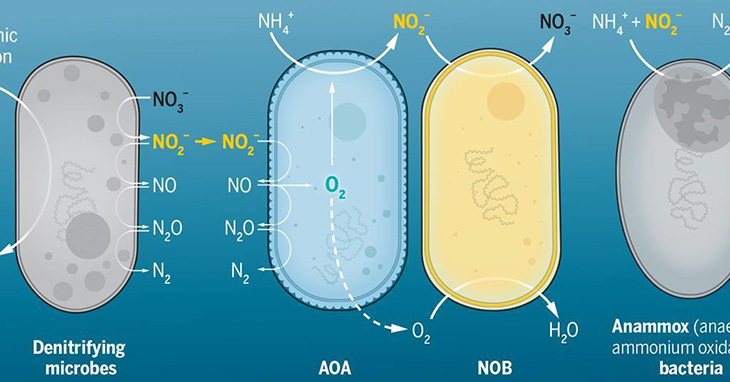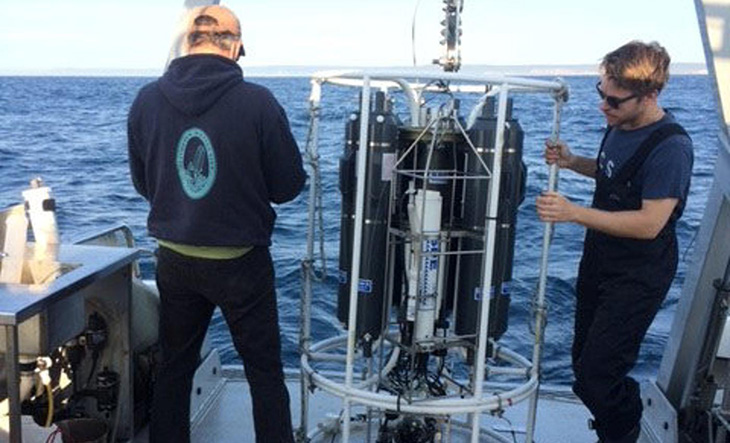
In the battle against climate change, it looks like a tiny marine microbe may just be the “secret weapon” the world has been looking for to help win this fight.
A single-celled microbe was recently discovered, which has the potential to absorb carbon naturally, according to scientists. They add that this is true even as oceans become warmer and more acidic too.
These miniscule microbes are abundant all over the world, and even have the ability to photosynthesize, and even hunt and eat prey.
Discovered by researchers in Sydney, Australia, this tiny organism secretes a carbon-rich exopolymer that both attracts and immobilizes other microbes. Then once it traps its prey inside, it eats some of it first before emitting a mucus-like, carbon-rich substance. Then once other microbes get trapped inside of it, it also becomes heavier, causing it to sink and pump carbon back into the oceans.

Experts also share that marine microbes control the natural environment of the waters through a number of processes, such as vertical export and sequestration of carbon. These processes are actually what help regulate the world’s climate.
Scientists also share that the role of plankton, on the other hand, is well understood as it helps store carbon dioxide. The role of other microbes in this process is not as well known. They add that this is more true for organisms that can photosynthesize and eat other organisms.
Experts also explain that their findings are highly significant in the way we see the ocean balancing carbon dioxide in the atmosphere. It is also estimated that the tiny microbe species, which has been named prorocentrum cf. balticum, ‘has the potential to sink 0.02-0.15 gigatons of carbon each year.’
According to experts, they believe that in order to meet the world’s climate goals, it is estimated that 10 gigatons of carbon dioxide will have to be removed from the atmosphere annually from now until 2050.
These findings also imply that there is major potential for carbon sinking in the oceans than what was previously believed, which means that the seas could possibly capture carbon in very unexpected places. This also means that this process may ‘form part of the nature-based way of enhancing carbon capture in the ocean.’
Lead study author, Dr. Michaela Larsson, explained, “Most terrestrial plants use nutrients from the soil to grow, but some, like the Venus flytrap, gain additional nutrients by catching and consuming insects. Similarly, marine microbes that photosynthesize, known as phytoplankton, use nutrients dissolved in the surrounding seawater to grow.”
She continued, “However, our study organism, prorocentrum cf. balticum, is a mixotroph, so is also able to eat other microbes for a concentrated hit of nutrients, like taking a multivitamin.
“Having the capacity to acquire nutrients in different ways means this microbe can occupy parts of the ocean devoid of dissolved nutrients and therefore unsuitable for most phytoplankton.”
Professor Martina Doblin, who’s is the study’s senior author, said, “This is an entirely new species, never before described in this amount of detail. The implication is that there’s potentially more carbon sinking in the ocean than we currently think, and that there is perhaps greater potential for the ocean to capture more carbon naturally through this process, in places that weren’t thought to be potential carbon sequestration locations.”
“The natural production of extra-cellular carbon-rich polymers by ocean microbes under nutrient-deficient conditions, which we’ll see under global warming, suggest these microbes could help maintain the biological carbon pump in the future ocean. The next step before assessing the feasibility of large-scale cultivation is to gauge the proportion of the carbon-rich exopolymers resistant to bacteria breakdown and determine the sinking velocity of discarded mucospheres,” she adds.
She concludes, “This could be a game changer in the way we think about carbon and the way it moves in the marine environment.”
If you want to read more about the study findings, you can read the published version in the journal, Nature Communications.
What are your thoughts? Please comment below and share this news!
True Activist / Report a typo


